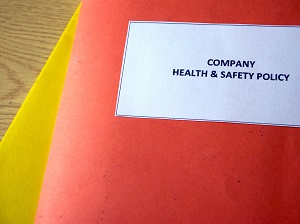It has been proven that a robust safety program pays for itself and implementing good safety practices at the workplace will save lives and prevent incidents and injuries.

Workplace incidents hit productivity and increase operational costs, channeling hard-earned profits down the drain. Along with the potential loss of life, a single workplace incident can cause substantial financial losses. However, these incidents are almost always preventable.
Regardless of the size or nature of your business, implementing a safety program is key. Workplace management helps you to fulfill your obligation towards all occupants and workers to ensure they are not exposed to health and safety risks that may arise from your business.
Here are some measures you can adopt to create a culture of safety for your organization. These practices will also help ensure that an effective and sustainable health and safety program remains a top priority.
Formulate a Safety Policy
Safety is not something you can incorporate with the snap of a finger. It starts with creating awareness and acknowledging the fact that there is a need to adopt safety measures. Therefore, creating a detailed health and safety policy exhibits leadership and corporate commitment.
Considering the inputs of employees from all levels of your organization to formulate the policy will ensure that they act responsibly towards the company’s safety policy.

Identify and Correct Safety Hazards
Once a safety policy is created, its implementation must be the top priority. This can be done by eliminating sources of hazards to avoid risks and then dealing with them by following a procedure.
Establishing an effective hazard prevention and wellness program that will cover all aspects of employee safety is essential.
For the program to accurately suit a particular workplace’s demands, it is recommended that the experts inspect the site thoroughly before, for any unusual risks. A risk assessment can help prepare a list of preventive measures necessary and avoid workplace injuries.
Provide Workplace Safety Training
An aware and informed workforce is the key to the early prevention of any workplace-related incident. All employees in your organization should be provided safety training and education, regardless of their industry experience.
Training workshops are a great way to engage employees and enhance their skill sets that will ultimately help to establish a safe working environment. Depending on the size of the organization and the resources available, it may be beneficial to offer safety training provided by training service provider.

Analyze, Observe and Listen
Once your workforce is trained in mitigating risks, reinforce safety measures at every occasion, which includes analyzing and observing. Consider everything that can go wrong, calculate the probability of an incident, and think of all the causes that can lead to a hazard.
One of the best strategies to prevent early workplace injuries is by listening to your employees' requirements. Businesses that instill a culture of open communication are possibly at a much lower risk.
A worker sharing discomfort while performing job-related tasks should prompt immediate inspection. Monitor the results of the assessment report and identify the potential hazards. Gradually you will start noticing trends and will be able to eliminate them before an incident occurs.

Provide Proper Protection Equipment
Personal protection equipment should be an essential component of your safety program.
Different work environments require different types of safety gear, but it is always important to ensure that the PPE provided fits the employee. Educate employees on using goggles, sturdy gloves, helmets, safety boots, face protection, hard hats, harnesses, and earplugs, if those items are required.
Conduct Safety Meetings
Holding regular safety meetings ensure that employees remain focused and reminded of the issues. Vary your safety meeting topics to keep your team interested. These small meetings will encourage your workforce to adapt to the safety measures.
Investing in the health and safety program for your organization will only net positive results for your employees and for your bottom line. If it makes sense for your business, you may consider a third-party service provider for your safety training needs.

.jpeg)
